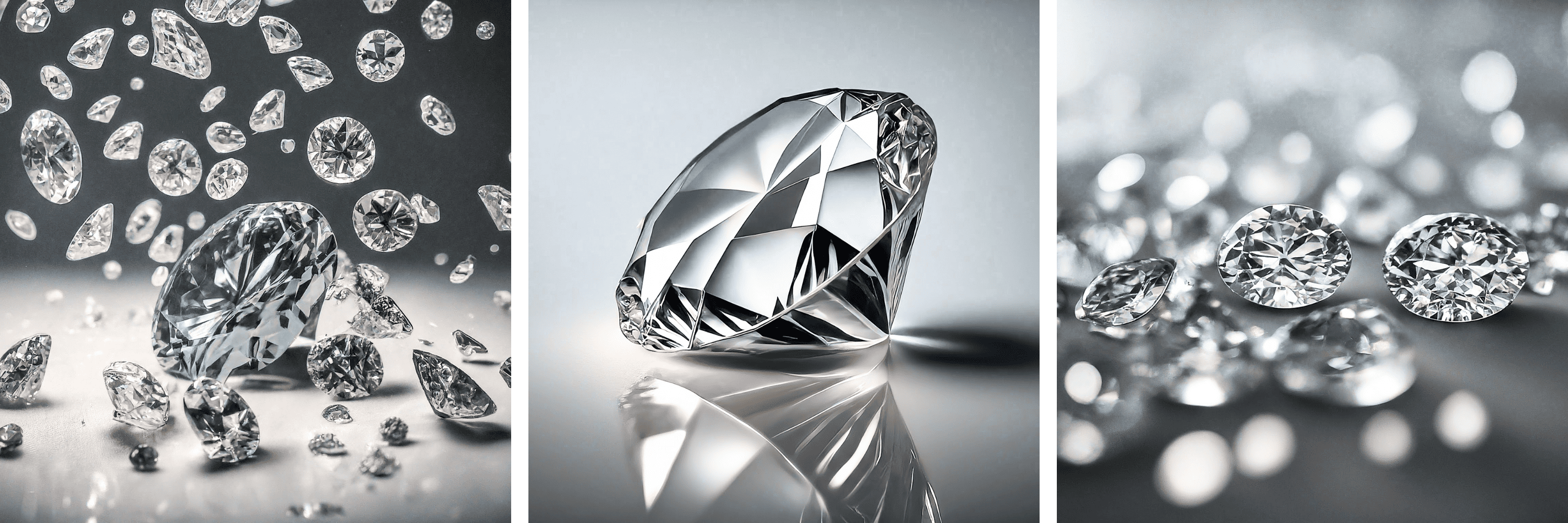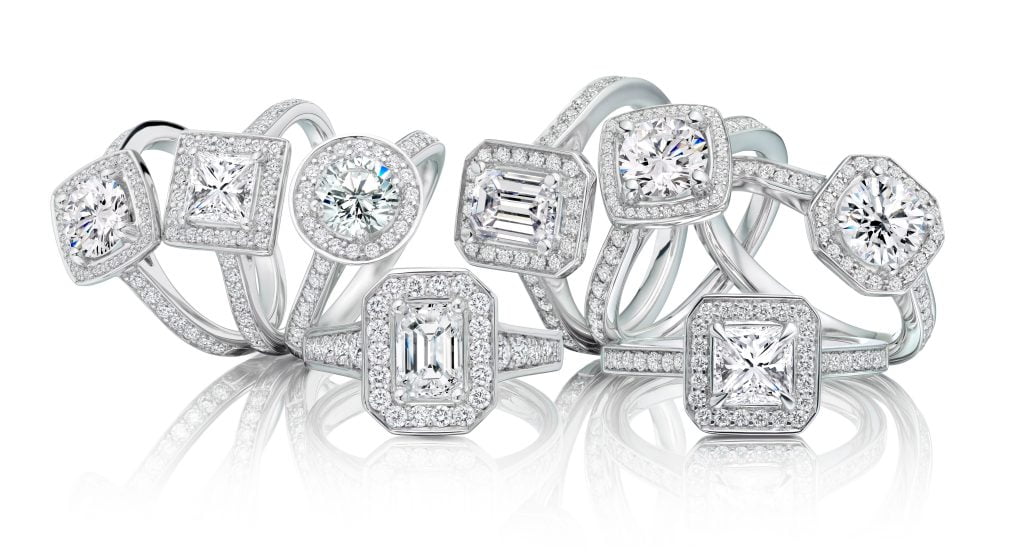You may wonder, what is the difference between lab-grown Diamonds and natural Diamonds, if there is any. While there are some differences, they look the same and are created in almost the same way. Keep reading to learn more about how Diamonds are created, the differences, and what type of Diamonds we sell.
Natural Diamonds:
They are formed deep in the earth under pressure and in high temperature. Volcanic activity helped bring them to the surface where they are placed in a type of rock known as ‘kimberlite pipes’, waiting to be mined. About 5% of this rock has enough Diamond to make them sufficient to mine.
Lab-Grown Diamonds:
Laboratory-grown Diamonds, also known as Man-made Diamonds, were first made in a laboratory in the 1950’s. Although they were produced in a lab for the first time then, it was not until around 2010 that colourless lab-grown Diamonds entered the market. High pressure, high temperature Diamonds are created in a lab by mimicking the high pressure and temperature conditions that form natural Diamonds.
Are lab-grown Diamonds classed as ‘Fake Diamonds’?
A lab grown Diamond is not fake, however the process time is slightly different. To create a lab-grown Diamond, scientists recreate the same process used by nature that creates real Diamonds, but this process only takes a few months rather than millions of years. Normally, lab-grown Diamonds have weighed 1 carat, or even less, but as the techniques progress, larger stones are appearing in the jewellery market.
What are the differences?
It is important that natural and lab-grown Diamonds can be identified as consumers need to know what they are purchasing. Lab-grown Diamonds are not ‘cheap’, however they are mostly cheaper than natural Diamonds. Since lab grown Diamonds skip the mining process, they touch less hands along the way, resulting in a less expensive Diamond. Although they are both pretty much identical in appearance, they have subtle differences. Using sophisticated devices developed by the GIA allow you to identify natural Diamonds from lab-grown ones.
Are lab-grown Diamonds similar to cubic zirconia?
As lab-grown are considered to be real Diamonds, cubic zirconia are not. This is due to the fact lab-grown Diamonds share the same physical and chemical properties, just created by humans rather than the earth. Whereas cubic zirconia are made by melting zirconium oxide in a metal chamber and adding minerals. Once it’s heated to 5000 degrees Fahrenheit, its removed from the chamber, which is when the crystal starts to form.
Are lab grown Diamonds worth buying?
As more are being added to the market, the more we learn about the process of how these stones are made. This means will see them become more affordable as time goes on. Unlike natural Diamonds that are mined from the earth, lab-grown Diamonds won’t normally gain value. In recent years, their value hasn’t kept up with inflation, partly because of the increased availability of lab-grown gemstones.
Although there are some negatives in buying a lab-grown, there are some positives. As traditional Diamonds rely on the Earth’s conditions to determine their quality, lab Diamonds don’t as manufactures can control a Diamonds quality.
What Diamonds do we sell?
Here at Nettletons, we pride ourselves on specializing in the finest natural Diamonds. Before purchasing a Diamond, whether that be a ring, pendant or earrings, we check the 4C’s: cut, clarity, colour and carat. While the market has seen a rise in the appeal of lab-grown Diamonds, we caution that these can suffer from fluctuating prices and a potential lack of long-term value. However, recognizing that some customers may prefer lab-grown Diamonds, we do have suppliers who can provide us with these upon request. This allows us to provide a personalized experience, offering the value of natural Diamonds and the flexibility of sourcing lab-grown alternatives. By choosing our natural Diamonds, you are investing in a gemstone of authenticity and quality.




